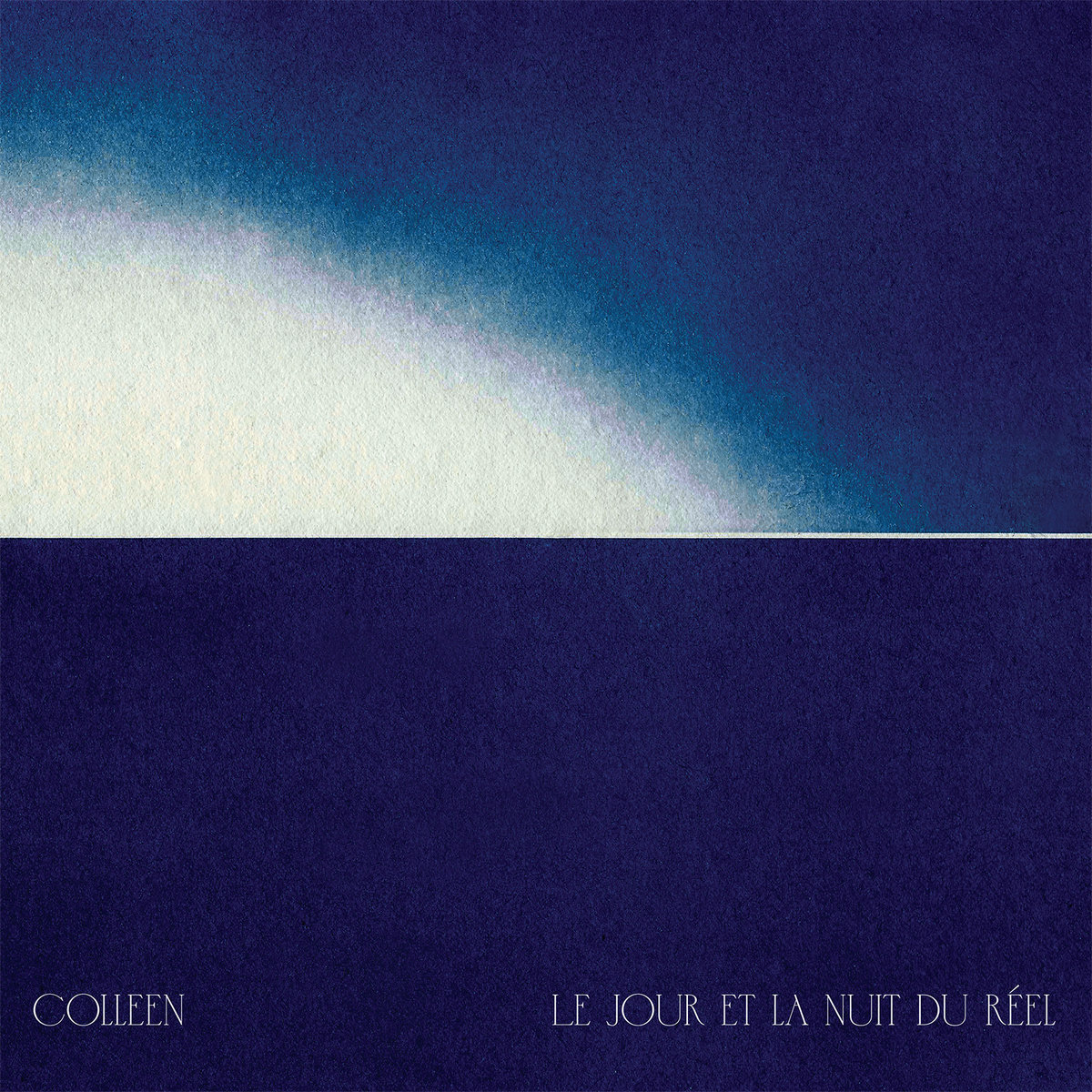Colleen, "Le jour et la nuit du réel"
 As someone who has loved Cécile Schott's work since 2003's Everyone Alive Wants Answers, I have long been fascinated by the various twists and turns that her vision has undergone over the years. While there have certainly been stretches in which she has lingered upon a vision for more than one album, Schott's creative restlessness invariably steers her into adventurous and unfamiliar territory eventually. As a result, Colleen's small discography is divided into an impressive number of distinct phases (the sample-driven collage era, the viola da gamba years, the synthesizer years, etc.). In a general sense, this latest full-length (her ninth) is a continuation her recent synthesizer phase, but it is also a significant break from her previous work in that vein: Le jour et la nuit du réel is seven-suite double album of minimalist vignettes exploring how a motif can be significantly transformed through the manipulation of synthesizer settings alone. Given the fundamental constraints of that vision, the album admittedly feels a bit less substantial than several of Colleen's previous releases, but connoisseurs of nuance and elegant simplicity will find much to love.
As someone who has loved Cécile Schott's work since 2003's Everyone Alive Wants Answers, I have long been fascinated by the various twists and turns that her vision has undergone over the years. While there have certainly been stretches in which she has lingered upon a vision for more than one album, Schott's creative restlessness invariably steers her into adventurous and unfamiliar territory eventually. As a result, Colleen's small discography is divided into an impressive number of distinct phases (the sample-driven collage era, the viola da gamba years, the synthesizer years, etc.). In a general sense, this latest full-length (her ninth) is a continuation her recent synthesizer phase, but it is also a significant break from her previous work in that vein: Le jour et la nuit du réel is seven-suite double album of minimalist vignettes exploring how a motif can be significantly transformed through the manipulation of synthesizer settings alone. Given the fundamental constraints of that vision, the album admittedly feels a bit less substantial than several of Colleen's previous releases, but connoisseurs of nuance and elegant simplicity will find much to love.
The album's title translates as "The day and the night of reality," which is a nod to both the album's structure and its primary inspiration. The "reality" bit is a reference to how "subtle or radical" changes to synth settings can completely transform how the same melodic phrase is perceived by the listener, which Schott likens to how new information can transform our feelings about a person or situation (i.e. our perception of reality). In keeping with that theme of transformation, the album is divided into "day" and "night" LPs and the first LP concludes with a suite entitled ""Be without being seen," which is intended to function as a "twilight transition zone." According to Schott, the "day" pieces feature "more friction, tension, and abrasive timbres" in order to channel the "invigoration of daylight," while the "night" pieces feature "slower, more melancholy textures and longer trails of delay." Being a longtime fan of both melancholy and trails of delay, I personally prefer the album's second half, but both sides of the album share a hell of a lot more common ground than they do differences: every single piece on the album is essentially a simple melody unspooling over a shifting bed of arpeggios. Schott's gear was similarly stripped down, as the entire album was recorded analog-style with just a Moog Grandmother synth and two delays (Roland RE-201 Space Echo and "her trusted Moogerfooger Analog Delay") and "no additional digital production." Interestingly, this album is the first entirely instrumental album that Schott has recorded in well over a decade, but it began its life as an "an album of songs with lyrics in the style of her previous album," so Schott's muse definitely led her quite far from where she originally intended to go (and I suspect this new vision must have been considerably more challenging to realize than what she originally had planned).
For me, the centerpiece of the album is the five-part "Les parenthèses enchantées" suite, which Schott named for a French idiom that means "a beautiful moment destined to end soon." The suite is certainly beautiful and ephemeral enough to justify its title, but its duration (around 20 minutes) actually makes it the longest suite on the album by a significant margin. Lurking within those 20 minutes are both of the album's most sublime highlights. In the first, "Movement I," Schott delves into decidedly Satie-esque territory, as an understated melody quietly unfolds over a simple arpeggio pattern with appropriately wistful results (and the occasional trilling and fluttering flourishes leave behind a lovely vapor trail of hazy delay). Unsurprisingly, "Movement III" shares a similar mood, but features considerably more flickering and stuttering in its central melody, which gives it an unusually spontaneous, vibrant, and unpredictable feel.
Naturally, the other six suites have their own character and beautiful moments as well (the two-part "The long wait" being another favorite), but Schott's larger achievement lies in how masterfully she manipulates her synth and delay settings to seamlessly move between moods ranging from dreamy calliope to glassy murmurs of feedback to something resembling laptop-ravaged banjo (as well as quite a few other places that elude easy description). I was briefly tempted to observe that the album's other caveat besides Schott's aggressively minimal "nothing but a synth and some delay played in real-time" vision is that several pieces are far too brief to leave a deep impression, but I ultimately decided that she intuitively knew when to end each piece before it started to overstay its welcome. Also, it does not matter if there are six or seven 1-minute pieces if the album itself adds up to a substantial and dynamically satisfying whole (which it does). Consequently, the only real caveat here is that Schott achieved something both wonderful and highly specific, so how much one loves this album is entirely dependent on how much one appreciates her craft and virtuosic attention to detail: other Colleen albums may have more memorable or more moving songs, but no Colleen album can boast stronger performances or a more focused vision. It remains to be seen whether or not Le jour et la nuit du réel will someday become one of my own favorite Colleen releases, but I do feel confident in stating that is a gorgeously realized work of art, as I can think of very few other artists who could weave a few simple melodies, patterns, and arpeggios into a unique and quietly mesmerizing tour de force of perfect, uncluttered elegance like this one.



